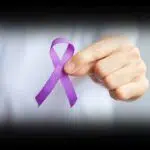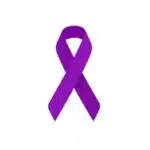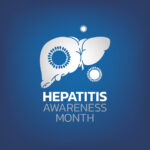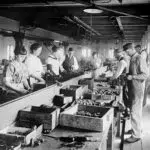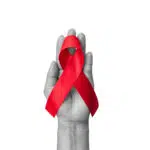Bladder Cancer Awareness Month is observed in May every year. This is a time to discuss what bladder cancer is, its common symptoms, the risks involved, and preventative measures. Many aren’t aware of the disease symptoms and there is no better time than now to arm them with the necessary information to take their health seriously. In this month, you can also take some time to remember and honor those who lost their lives to bladder cancer. Be there for someone who might have lost a loved one. Empathy won’t cost you a dime and besides, it’s so fulfilling. Learn, help, and contribute!
History of Bladder Cancer Awareness Month
Historically, bladder cancer has been associated with environmental carcinogens. This was first discovered in 1895. Before this, German urologist Maximilian Nitze came up with the process of cystoscopy (endoscopy for the urinary bladder) in 1877. Surgical removal of some parts or all of the bladder was performed as a treatment for this type of cancer. It wasn’t until 1903 that radiation was used to treat cysts or tumors in the bladder.
Since the early 2000s, several treatment options have been put in place, thanks to the advancement of science and technology. In 2000, a new chemotherapy combination was introduced, which is deemed more effective and with fewer side effects than M.V.A.C. therapy. More recently, in 2016, new techniques were discovered that detect cancerous tumors in the bladder that are invisible to the naked eye. Now that’s quite some progress, don’t you think?
Currently, with the introduction of new technologies and the rising efforts of awareness campaigns, people are slowly getting acquainted with bladder cancer. However, they are still not fully informed of the risk factors, causes, how to detect symptoms, when to get diagnosed, and other crucial matters. Bladder cancer is commonly observed in the older population and it still poses a threat with its rampant nature.
Healthcare specialists and scientists could not zero in on what exactly causes this type of cancer. But over the years of research, they have discovered some of the common risk factors to be smoking tobacco, arsenic in drinking water, and previous exposure of the pelvic area to radiation. Notably, painters, hairdressers, and dry cleaners are highly susceptible to the disease because of their long-term exposure to harmful chemicals at their workplaces. It’s high time such people are made aware of the consequences.
Bladder Cancer Awareness Month timeline
The first occupational case of bladder cancer is reported in the U.S.
Diane and John Quale set up The Bladder Cancer Advocacy Network to raise funds and public awareness, promote research, and support those impacted by the disease.
The first national walk for Bladder Cancer Awareness takes off with over 25 communities in the U.S. taking part in it.
The F.D.A. approves atezolizumab as the new bladder cancer treatment in the past 30 years.
Bladder Cancer Awareness Month FAQs
Is bladder cancer curable?
When caught at an early stage, bladder cancer can usually be cured. However, it can return over some time. So, regular check-ups are essential even after the treatment or surgery.
What age do you get bladder cancer?
Bladder cancer isn’t really common among youngsters, it occurs mainly among older people. More than 90% of people diagnosed with this cancer are aged 55 years or more.
What are the three types of bladder cancer?
Adenocarcinoma, Urothelial Carcinoma, and Squamous cell carcinoma.
How to Observe Bladder Cancer Awareness Month
Start a campaign on social media
As social media has the highest reach, why not start an awareness campaign with #BladderCancerAwareness? A hashtag can go a long way!
Share your stories
Whether you’re a patient, a loved one, or a caregiver, share your personal stories to help raise awareness and also to honor those who have been impacted by the disease. Let them know they’re not alone.
Wear orange
Choose to wear orange more often this month to stand in solidarity with those living with bladder cancer or a loved one who is taking care of a patient. Kind gestures never hurt!
5 Facts You Didn’t Know About Bladder Cancer
A common type of cancer
According to current statistics, cancer in the bladder is the 6th most common cancer in the U.S.
Bloody urine is a sign
Blood in the urine turns out to be a common symptom of bladder cancer.
Common in men
Bladder cancer has a high occurrence rate in men than in women.
Say no to smoking
People who smoke have twice as much chance of contracting the disease as non-smokers.
High recurrence rate
Bladder cancer has a 50 — 80% chance of returning, the highest among all cancers.
Why Bladder Cancer Awareness Month is Important
A time of gratitude
In the month of Bladder Cancer Awareness, let’s thank our healthcare experts for working endlessly to give us a better life. We should also give gratitude to supportive family and friends of those who suffer from bladder cancer.
Rising to the challenge
Through the observation of this month, we can understand the challenges faced by cancer patients and also pinpoint needs that are not met. We should also pay a visit to cancer patients to show our support.
Boosts funding
Creating awareness of the disease can encourage investment into the research, care, and treatment that matters most to patients. Give what you have, a little can go a long way.
Bladder Cancer Awareness Month dates
| Year | Date | Day |
|---|---|---|
| 2026 | May 1 | Friday |
| 2027 | May 1 | Saturday |
| 2028 | May 1 | Monday |
| 2029 | May 1 | Tuesday |
| 2030 | May 1 | Wednesday |





























































